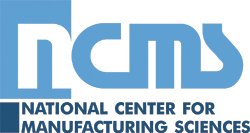Historical Articles
June, 1953 issue of Plating
QUESTION BOX
readers’ question of general interest.
Q. 158. We are compiling information on safely in plating rooms and are particularly interested in guarding against rash and allergy from nickel solutions. Also concerned are vapor degreasers, trichlorethylene, sulfuric acid, hydrochloric acid and caustic cleaners.
A. Good housecleaning coupled with the use of protective creams or lotions have been found to be satisfactory answers to this problem in the past. (The names of suppliers were furnished along with literature on control of dermatitis.)
Q. 159. Some of our cast iron parts are nickel and chromium plated. We do get a small amount of frost, however, which incidentally buffs off. Parts are then wrapped in paper until they reach the dealer. Dealers complain of frost reappearing after a short time in display rooms. Will you kindly suggest a possible cure for this condition
A. Plate the castings to a thickness of at least 0.001 inch and better in a cold nickel solution at a current density of about 6 to 8 amperes per square foot. Following this lengthy plating operation with a buffing step plus a flash of chromium plate should give a product that will not be as troublesome as that described.—LOUIS DONROE.
Q. 160. Is there a synthetic resin or plastic which can be used for covering the inside of a watch case? The purpose of this filling is to prevent gold plating of the inside of the case while the outside is being gold plated.
A. There are a number of masking materials or stop-off lacquers which can be used for the purpose described (names of suppliers were furnished).—A. KORBELAK.
Q. 161. Is it possible to economically vapor coat steel evenly, with 0.003 to 0.004 inches of aluminum which will then be anodized to produce a hard wearing surface?
A. The conventional vapor coating techniques do not deposit a coating approaching the thickness desired above. In the alumnizing of glass reflector type envelopes (sealed beam headlamps, etc.) the coating is approximately 6 millionths of an inch in thickness. Other decorative aluminized coatings are thinner— strong light would be seen through them. Sprayed coatings may be too porous, but will give the desired thickness. Gas plating is not economical. The best solution to the problem appears to be in the purchase of bimetallic stock in which aluminum clad material is a regular production item.—A. KORBELAK & H.H. HAFT
 |
 |
 |
 |
 |
| Home | Subscribe | Regulations | Compliance Assistance | News | Resources | Resource Locators | Directories | Online Training | About | Search | NASF.org |
The information contained in this site is provided for your review and convenience. It
is not intended to provide legal advice with respect to any federal, state, or local regulation.
You should consult with legal counsel and appropriate authorities before interpreting any
regulations or undertaking any specific course of action.
Please note that many of the regulatory discussions on STERC refer to federal
regulations. In many cases, states or local governments have promulgated relevant rules and
standards
that are different and/or more stringent than the federal regulations. Therefore, to assure full
compliance, you should investigate and comply with all applicable federal, state and local
regulations.

